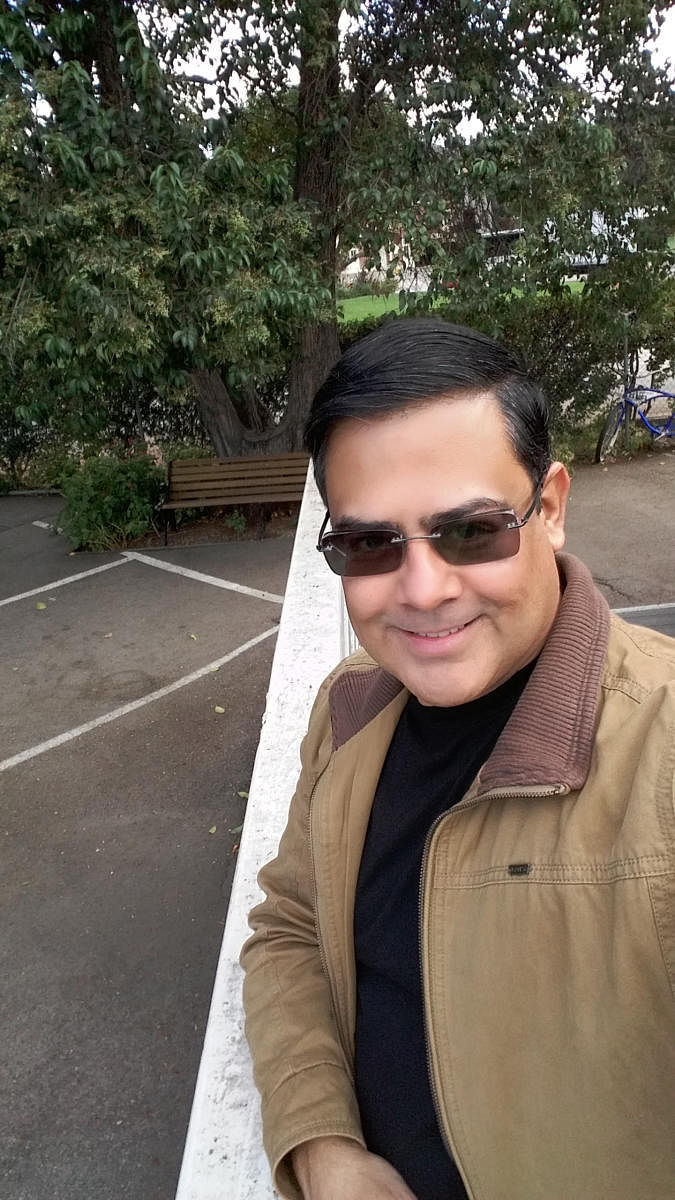
Ashok Banker has many surprises up his sleeve. The author of the bestselling Ramayana series is also a screenwriter and has written crime thrillers, essays and literary criticism. In 2003, when he wrote the first book in his blockbuster Ramayana series, he pushed this renowned epic to the forefront of popular culture, inspiring other writers to rework the classic.
Now, Banker is back with a graphic novel of his first book in the Ramayana Series, The Prince of Ayodhya. We talked to him about his work and his immense love for the genre. Excerpts from an interview:
What prompted you to rework Prince of Ayodhya as a graphic novel 17 years after its publication?
It has always been a dream. Several years ago, when a fan of the books contacted me from Argentina, expressing how much he would love to illustrate my story, I invested my own funds in commissioning him. The result was the graphic novel ‘Prince of Ayodhya’ written by me and beautifully illustrated by Enrique Alcatena. Unfortunately, graphic novels don’t sell big in India and I couldn’t secure international distribution, so I couldn’t afford to continue funding the series. Then in 2017, a publishing house called Campfire contacted one of my Indian publishers for rights to some of my books. I got in touch with them and in late 2018, we struck a deal.
How was your collaboration with artist Sachin Nagar?
I was looking forward to a collaborative working process as should be the case with any graphic novel. Unfortunately, most Indian comics companies still have a stilted attitude towards talent. In the end, I only got to see Sachin’s complete artwork after the graphic novel was released! Still, the art is superb and I am delighted with the result. This is such a contrast to the wonderful collaborative working relationship I had with Quique (Enrique) Alcatena on the earlier version of the same book. If this new book works, it is because there was already an existing template to draw from — my own first graphic novel, which I personally designed and art directed.
What do you think of the graphic novel as a literary form and what are your favourite graphic novels?
I love graphic novels passionately and have done so for five decades. I’ve always been an avid reader and collector. Here in the US where I now live, it is easy as there are half a dozen comics stores in my neighbourhood! My favourite graphic novels are in the literary and crime genres. Some recent ones are the new Ed Brubaker-Sean Phillips novels in their criminal series, My Heroes Have Always Been Junkies and Bad Weekend. One of my all-time favourites is the brilliant 100 Bullets noir series by Brian Azzarello and Eduardo Rizzo, which is perhaps the most perfect melding of word and sequential image ever accomplished in the medium. I adore the work of Adrian Tomine and Nick Drnaso, whose Sabrina was the first graphic novel to be longlisted for the Booker. I could go on for hours!
What do you think of the graphic novel market in India?
Sadly, it hasn’t caught on in the way it has elsewhere in the world. The interesting but flawed attempts of companies like Virgin Comics several years ago (I wrote some titles for them), Gotham Comics, Liquid Comics and other brave attempts only underlined the lack of a wide market in the subcontinent. In the US, after a lull of almost two decades, graphic novels now are amongst the only growing segments along with audiobooks and children’s books.
Not just graphic novels, even book publishing in India has languished partly due to a lack of distribution outlets, bookstores and poor management on the part of Indian publishers who are far more interested in promoting imported titles in the country than their own local authors. Even Campfire, strangely enough, uses foreign writers for most of their graphic novels — which is so unfortunate given the number of talented comics writers in India.
Did you have to modify the story’s depth to make it work?
I went back to the original impulse of my novel and created a graphic novel from that same seed. So, in a sense, this is a story in its own right. It does draw deeply on the epic, its characters and world, but having said that, this is a version written for sequential art.
Do we live in a world where people have shorter attention spans when it comes to reading?
On the contrary, we live in a world where children are reading 800-page novels. More and more adults are reading multi-volume 1,000-page fantasy series running into 18-20 books! Book sales are robust and growing in several segments. The film and TV entertainment world is largely dependent on adapting books for the screen, often with multiple volumes adapted to dozens of episodes over years, even decades in some cases. It’s an unprecedented period in the history of the business.
What is it like to see your own work adapted?
I love it! When I was 15, I tried to start a comics company of my own. I even registered three titles in the Metropolitan Magistrate’s court in Mumbai: Zone, Titan, and Valentine for crime/horror/suspense, science fiction and romantic comics.
By the time I was almost 20, I finally found a backer willing to fund the venture, but at the last minute, the deal collapsed. If it had worked out, I would have become a comics publisher and devoted my life to the medium, while also writing novels.
A graphic novel is such a visual medium. What impact did it have on your writing style?
It was refreshing to switch from the dense forest of fiction to the sparse, colourful landscape of comics. I loved it!